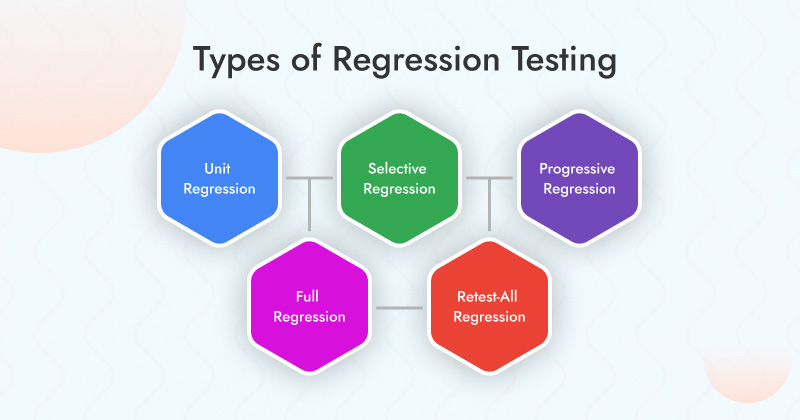5 Types of Regression Testing (You Should Know)
The regression testing technique is not a one-size-fits-all solution. Let's look into some of the most commonly used types of regression testing: · 1. Full...

The software development field has always been in a state of change, and as a result, so have software testing procedures and techniques. The selection of the right software testing technique is important for achieving optimum quality in a software project. New features are incorporated, bugs are fixed, and the codebases change. While the changes bring progress, they can also create problems that can affect the existing functionalities of software. Here comes the need for regression testing, which is one of the key supports for software stability in Software Development Life Cycle (SDLC). It is one of the types of software testing methodologies carried out by any organization's Quality Assurance (QA) team.
What is Regression Testing?
Regression testing is a popular software testing technique in which existing functionalities are retested based on the original tests after making changes to the code. This helps them to verify and make sure that new changes have not caused some previous working features to fail.
Regression testing is used to identify those particular bugs that are recurring and need to be resolved in order to maintain the high quality of the product and to retain the user's confidence in the product. It's an important step in making sure that changes don't bring back old problems, helping to maintain confidence in the software.
Types of Regression Testing
The regression testing technique is not a one-size-fits-all solution. Like in any other aspect of software development, regression testing is built on various strategies. Let's look into some of the most common types of regression testing:

1. Unit Regression Testing:
Unit testing forms the background to a good strategy for regression testing. Its approach can be seen as similar to a group of inspectors making a check of individual bricks before constructing the wall. This method focuses on the smallest building blocks of software. Like functions and classes in every code unit.
2. Selective Regression Testing:
Selective regression testing provides a robust model for maximizing efficiency during the testing process. In this regression testing type, QA testers give attention to the test cases that are most likely to be impacted by recent code changes, just like firefighters deploy their equipment to tackle a fire. This prioritization is done based on an impact analysis of the code to determine which sections of code are most likely to be affected by a regression depending on the changes made.
3. Progressive Regression Testing:
Just like its name suggests, progressive regression testing ensures a gradual progression in the scope of testing as a software project evolves. This method starts with focusing on core functionalities and then moves on to add new test cases as new features are developed and the codebase increases. This strategy integrates better QA into the software development lifecycle. If we consider it by an example, it is like gradual building up a wall by adding bricks at a time and making sure that stability is maintained as the structure goes higher.
4. Full Regression Testing:
This testing technique is the most comprehensive within the regression testing method. In this case, all the existing test cases are repeated after some changes in the code have been made. The objective is to identify any adverse effects across the entire software and to ensure that any major functionalities are not compromised.
5. Retest-All Regression Testing:
It takes a comprehensive approach as it involves re-running all existing test cases regardless of recent code changes. This method is useful for identifying regressions that might have been introduced over a longer timeline, not just as a result of the latest changes. The retesting of all functionalities allows teams to test the entire software and reduce any risks of unknown problems that can affect its performance and reliability.
When Should You Use Regression Testing?
As we have initially discussed, regression testing isn't a one-size-fits-all solution. However, when applied throughout development, it provides a valuable mechanism that, when strategically applied, optimizes the process. Here are some key scenarios where regression testing shines:
- After code changes: This is the most common use case. Whenever new features are implemented, bug fixes are applied, or code is updated, regression testing validates that changes haven't accidentally harmed existing functionalities.
- Before major releases: Most important, before releasing a new version of software, all regression tests should be made. This assists in catching and fixing any regression issues before they impact users in the production.
- Integration of new components: Regression testing is used to ensure that the old functions work well even when integrating third-party libraries or new system modules. It confirms whether the software will still function smoothly after bringing in other libraries.
Conclusion
Choosing the right regression testing technique is very essential in order to ensure the stability of software. Hence, to be most effective, the right method must be selected in light of such parameters as code base size, frequency of releases, and constraints. To build a robust strategy, it's important to define clear test cases and prioritize critical functionalities. Automation should be utilized wherever possible to accelerate the testing process. Thus, with the help of a properly developed regression testing strategy, you’ll be able to always keep your software up to par and develop it with confidence.
